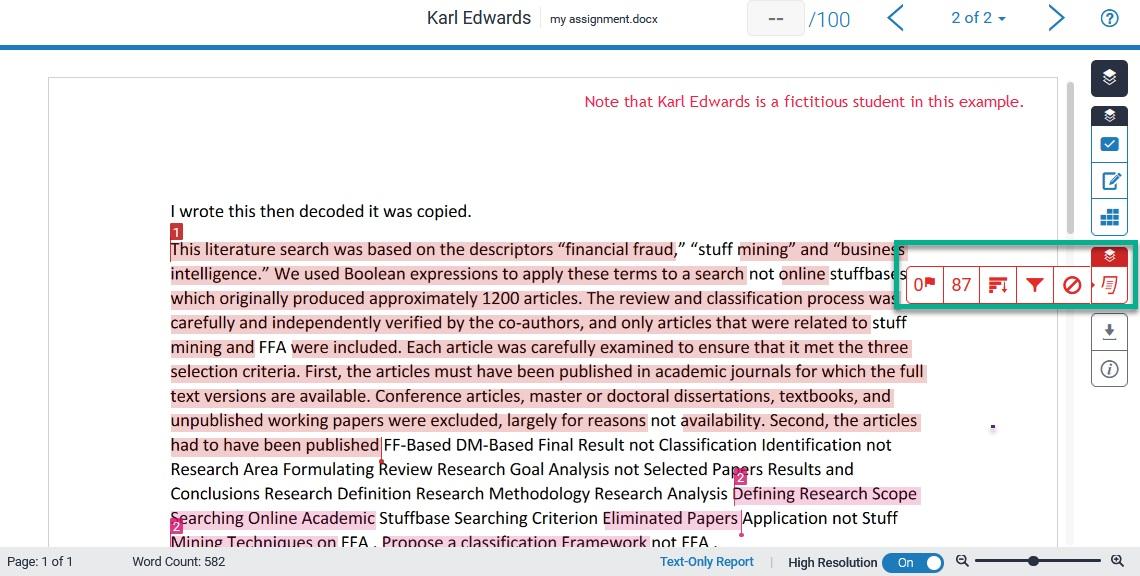Detecting Similarity and Deterring Plagiarism In Your Course
The Academic Board endorsed an amendment to the Assessment for Coursework Programs Policy that all assessments must be submitted and monitored through text or code comparative software where possible. The change will come into effect January 1, 2022.
Assessments with similarity scores flagged by comparative software may need to be checked further for possible instances of plagiarism. Plagiarism can include:
- directly copying any material from electronic or print resources without acknowledging the source;
- closely paraphrasing sentences or whole passages without referencing the original work;
- using the ideas or concepts of others, including the structure of an existing analysis, without due acknowledgement by way of reference to the original work or source.
MyUni has two tools to help you identify copied material using similarity matching software; Turnitin and Gradescope. It is important to know how to use these effectively and be aware of the options, settings and limitations when using these tools to detect possible cases of plagiarism.
Turnitin and Gradescope are not plagiarism detectors - you are the detector!
Plagiarism may be inadvertent or intentional. Your professional expertise and judgment is crucial to detecting potential academic misconduct above and beyond the information that these tools can provide.

Turnitin Similarity Reports
Turnitin, can be used to monitor and check text based matching of written assessments submitted via MyUni. It will automatically generate a similarity report for each work that you can easily check.
To reiterate, Turnitin does not check for plagiarism in a piece of work. Instead, it checks a student's piece of work against sources within its database. If there are instances where a student's writing is similar to, or matches one of the database sources, it flags this for you to review. The Turnitin database includes web pages, both current and archived content from the internet, and a repository of works that students have submitted to Turnitin in the past, and a collection of documents, including periodicals, journals, and publications.
It is important to know how to interpret a Turnitin similarity report. The similarity index alone cannot tell you whether the assignment has been referenced correctly, or whether a potential breach of academic integrity has occurred. There is no perfect similarity score. Any amount of matched text without appropriate quotation, paraphrasing or referencing could be a breach of academic integrity.
A zero or low similarity score may still require further checking because it is possible that the student has simply submitted a paper with text that Turnitin cannot recognise. Whilst Turnitin has a vast repository of resources available to check against, it is not an exhaustive database. If for any reason you suspect that text has been copied that has not been flagged by Turnitin, you are still able to perform a simple search using a web browser or library database to check for similarity matching.
To assist you further, refer to the Guide to Interpreting Turnitin Similarity Reports.
Turnitin Set Up
When using Turnitin to check for text matching of student assignments you should only use the method outlined in the MyUni Learning Centre. You can make a time with an Educational Technologist or Learning Designer from Learning Enhancement & Innovation (LEI) for further assistance on use of Turnitin.
Gradescope Code Matching Similarity Reports
Gradescope is now available via MyUni for courses where computer programming code needs to be checked for originality as part of an assessment. When computer programming code is submitted through the Gradescope assignment tool, a report is generated to compare similarity in all program code files that have been submitted for that particular assessment. n.b. The scope of the matching does not extend beyond that assessment task. The Gradescope tool is available by default for Computer Science courses.
For further information on using the Gradescope similarity tool contact an Educational Technologist from Learning Enhancement & Innovation.
The requirement to use text and code matching software does not override the most important element of academic integrity – education. Use of the software is available to complement existing values based education practices. Staff are encouraged to discuss the principles and values of academic integrity with students in conjunction with an awareness of how text and code matching tools are used at The University of Adelaide.
Story by Kym Schutz with contributions from Jo England, Learning Enhancement and Innovation.
